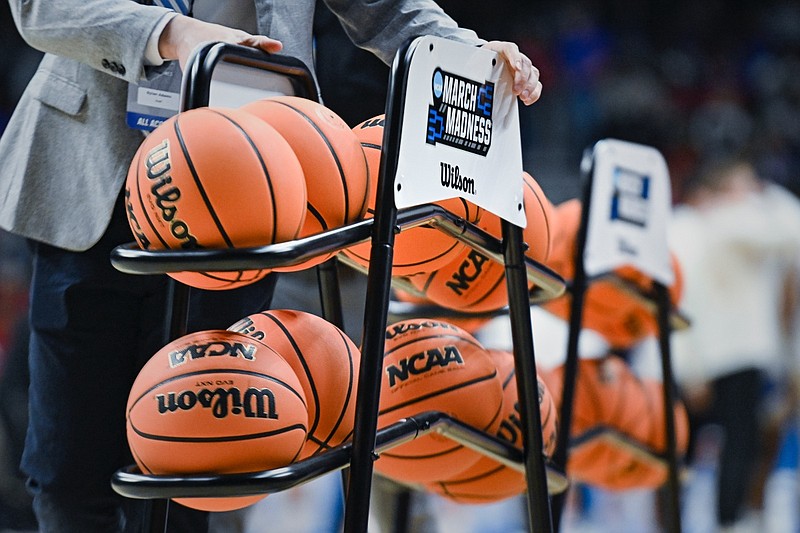The NCAA Playing Rules Oversight Panel on Thursday approved a rules change in men’s basketball for next season regarding the guarding position on block/charge scenarios.
A release from the NCAA states that under the new rule a defender “will have to be in position to draw a charge at the time an offensive player plants a foot to go airborne to attempt a field goal.” If the defender arrives after the offensive player plants a foot, officials will be instructed to call a block when contact takes place.
Defenders previously had to be in position to draw a change before the offensive player left his feet.
The release also states the NCAA Men’s Basketball Rules Committee members made this proposal following feedback that “too many charges are being called” on similar-type plays. The rules committee believes the alteration will provide game officials more time to make an accurate call.
Other rules changes, according to the release, include:
• Officials will be able to review goaltending/basket interference during the next media timeout to ensure an accurate call is made “as long as the official calls it on the floor.”
• When a coach requests an out-of-bounds play be reviewed with under two minutes remaining, that team will be charged a timeout if the original call is not overturned.
• Players will be allowed to wear numbers 0-99. No Arkansas player has worn a number greater than 55.
• A timeout can be granted when a player in possession of the ball is airborne.
• A player will be disqualified from a game after a third Flagrant 1 foul.
Women's basketball
The NCAA Playing Rules Oversight Panel approved new women's basketball rules Thursday.
An attempt to buckle down on flopping highlights an NCAA release about the new rules. Beginning in 2023-24, players will receive a warning on first offense for flopping. A technical foul will be issued for any subsequent violations.
The release states the intent of the rule change is to "reduce situations where players are trying to fool the officials."
Another change involves reducing the restricted-area arc. The area will move to directly underneath the basket instead of 4 feet in the lane. Under the new rule, "defenders cannot establish a legal guarding position directly underneath the basket" and the lower defensive box rule is eliminated. There will be not be any additional court markings on the floor.
Verbatim from the release, other rule changes include:
• Players will be allowed to wear numbers 0-99.
• Schools will no longer have to submit a waiver for players to wear religious headwear, provided it is safe for competition.
• An amber light strip will be permitted on the backboard to signal the end of a shot-clock period.
• An optional rule will allow for live video to be transmitted to the bench area. This has been an experimental rule for the past two years.
• A new class of technical fouls will be assessed to the team and not an individual offender. Delay-of-game warnings and flopping will fall under this category.
• When the shot clock is off at the end of a quarter or overtime, officials will use the game clock to determine when a 10-second backcourt violation has occurred.
• A permissive rule will allow conferences to implement an off-site collaborative replay system to assist game officials with replay situations.
• The shot clock will be reset to 20 seconds or the time remaining, whichever is greater, when there is a foul by the nonshooting team, but not against the shooter, during a try in flight that does not strike the rim.
• Officials will be allowed to use replay throughout the entire game for off-ball foul scoring plays; the review would be conducted during the next media timeout or intermission.

